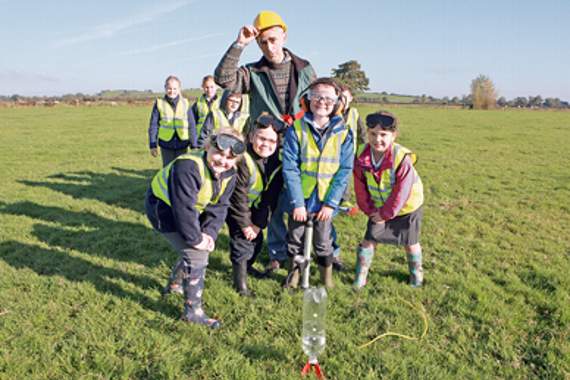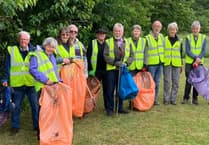HISTORY, physics and mathematics produced an explosive mix last week as Walmore Hill Primary School pupils celebrated Stargazer Week.
The pupils visited Walmore Common to launch homemade rockets as part of a history and science-inspired week.
Walmore Common was used by the RAF in the Second World War for bomb practice and pupils were treated to lectures by a local historian and landowner about the role the area played helping the RAF.
In the early 1940s it was a location for the Air Ministry to train crews of aircraft including Mosquito and Avro Anson in their bombing manoeuvres. The original ‘look-out post’ is still standing on what is now a Site of Special Scientific Interest (SSSI).
To give a taste of how the RAF plotted its targets the children were given charts and mathematical instruments to measure the distance their class-room creations travelled. Rather than petrol or gas, pupils created 19 fizzy-pop bottle rockets that were propelled to heights of nearly 140 feet, powered by nothing more than rain water and compressed air.
The missiles work by pouring a small amount of water into a plastic bottle, which sits in a launcher attached to a two-metre pipe. The pipe leads to a hand-pump that forces air into the bottle, when the pressure reaches a given point the rocket launches with a whoosh, and the high speed departure leaves a stream of water in its wake.
Headteacher, Mr Brett Stevenson said: “The history of Walmore Common is awe-inspiring and we brought it to life with a classic science and physics project that also gave the kids a good soaking.
“The Rocket Project is part of our Stargazer Week, which is based on a theme from National Curriculum that aims to make lessons more engaging, meaningful and relevant.”





Comments
This article has no comments yet. Be the first to leave a comment.